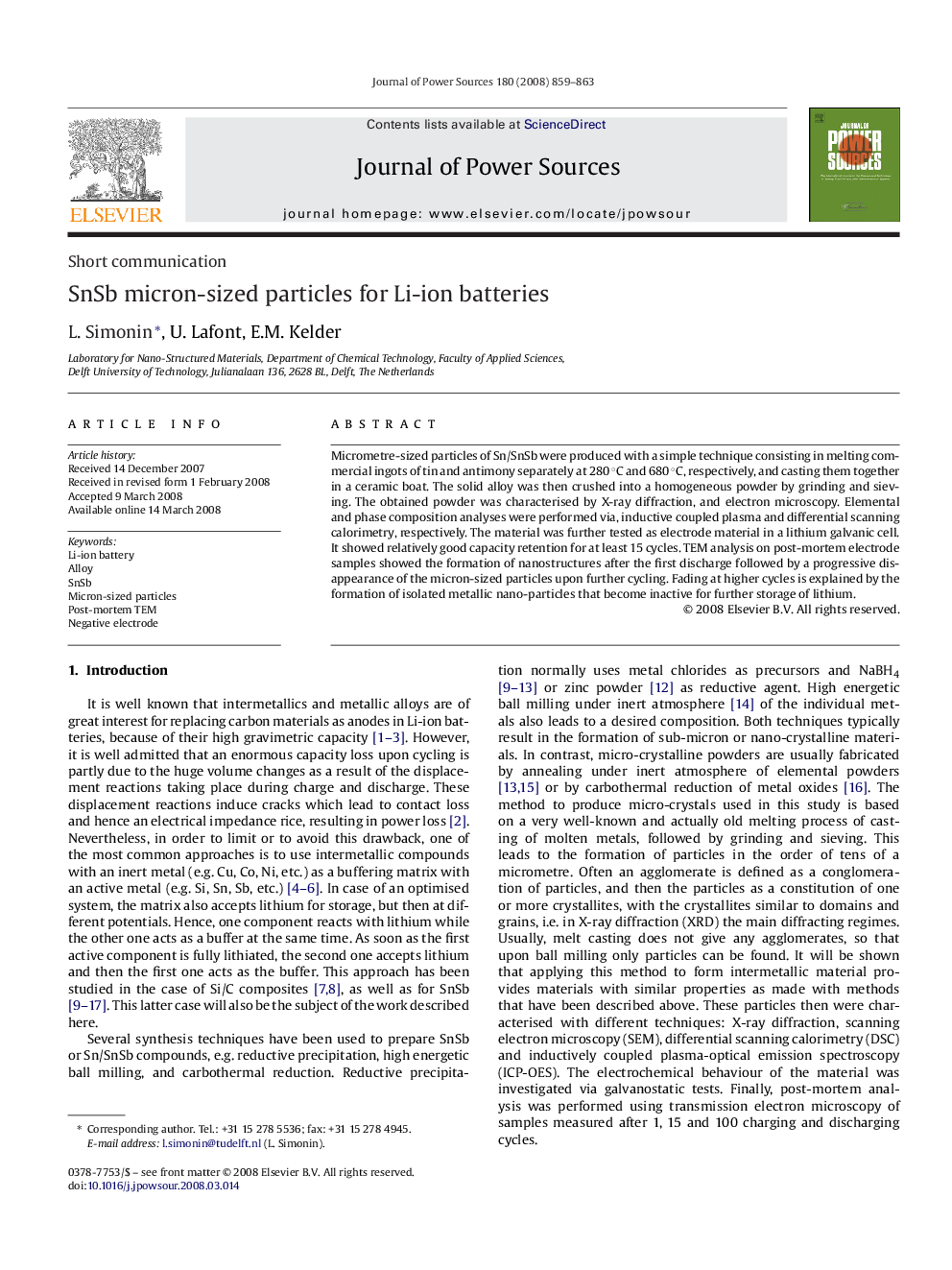| Article ID | Journal | Published Year | Pages | File Type |
|---|---|---|---|---|
| 1290476 | Journal of Power Sources | 2008 | 5 Pages |
Micrometre-sized particles of Sn/SnSb were produced with a simple technique consisting in melting commercial ingots of tin and antimony separately at 280 °C and 680 °C, respectively, and casting them together in a ceramic boat. The solid alloy was then crushed into a homogeneous powder by grinding and sieving. The obtained powder was characterised by X-ray diffraction, and electron microscopy. Elemental and phase composition analyses were performed via, inductive coupled plasma and differential scanning calorimetry, respectively. The material was further tested as electrode material in a lithium galvanic cell. It showed relatively good capacity retention for at least 15 cycles. TEM analysis on post-mortem electrode samples showed the formation of nanostructures after the first discharge followed by a progressive disappearance of the micron-sized particles upon further cycling. Fading at higher cycles is explained by the formation of isolated metallic nano-particles that become inactive for further storage of lithium.
